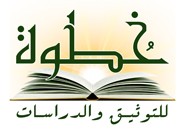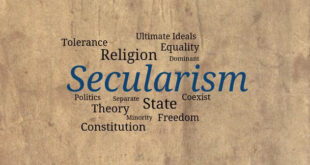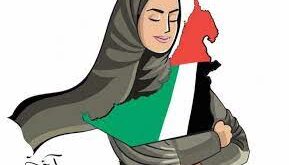Islamic Feminism as an Intellectual Movement
By: Prof. Amani Saleh*
Islamic feminism is, “The intellectual and dynamic movement that seeks to liberate, equate and empower women on an Islamic reference foundations based on the Qur’an, the Authentic Sunnah and Juristic Reasoning ‘Ijtihad“.
Two decades or more, this trend began to grow in the Islamic world and its geographical extensions in the West (represented by the Muslim communities there). Spite of its modest beginning, the trend flourished strongly, and has been crystallized as a discourse that has independent motives, characteristics, aims and rise-factors.
Origin and Reasons for Existence
Islamic feminism can be confidently described as a critical current that obtained its causes for existence, fields of creativity and independent thinking efforts from the complex critical position of the social and cultural reality that surrounds the contemporary Muslim women. On the realistic side, there is no doubt that this movement emerged from criticizing the reality of the Muslim community, where women suffer from severe grievances as well as stressful and painful social and humanitarian conditions. Equally, on the intellectual and philosophical levels, we find the dissatisfaction of many feminists’ women who are concerned with criticizing all the intellectual topics related to women, whether domestic or global, that can be classified into five levels:
First: Rejecting most of the major Western feminist schools’ arguments suggested as solutions and remedies to the women’s issues. This act as a reflection to the controversial rules upon which these schools have been founded, and which stemmed from the Western epistemology that is based on the trilogy: secularism, the western self-centeredness, and regarding Man as the god of his world. This also rejects the western feminist schools’ attempts for monopolizing the issue of women, and rejects their claims that they are the sole representatives of women in the world. On rejecting such cultural confiscation and superiority (of the west) over others, hereby the Islamic Feminism has been created on the premise that the empowerment or the liberation or equity of the Arab and Muslim women can be established on an Islamic reference, with a self and independent project that stems from the needs, circumstances and cultural-objective considerations of Muslim women in the countries of Muslim majority.
The dialectical critical origin of the Islamic feminism was not limited to the globalised discourse, but has rather extended to the local ones; the discourses that have been always regarded as dissatisfactory and insufficient to address the issue of Muslim women.
Second: Criticizing the Reformist Renewal Discourse. The bases of this discourse are: “Moderation” as the essence of Islam, and, the complete acceptance of the Islamic heritage without criticism or revision -despite of the discourse’s call for renewal – combined with the attempt to discover and highlight the positive good points in the Islamic heritage while being benevolent to the points of weaknesses; the characteristic that gives this discourse a “compromising” (or rather a “reforming) feature. Based on this, spite of the fact that this discourse calls for the need of renewal in many contemporary issues, yet when it comes to the issue of women, the discourse relies on masculine introductions, that depends on the idea that the division and integration of roles are the core center of its reformist theory. Imam Muhammad Abdo, is the founder of this belief and is an example of this masculine reformist trend. The ultimate effort exerted by this trend is to curb the hateful racism of the extremist masculinity through exchanging it with a moderate one that recognizes the human equality of men and women, spite of the hierarchical social and family vision it adopts. It can be termed as a “good” masculinity, which emphasizes the importance of justice, exchange of opinions and respect, in the qualitative relations in general, as well as recognizing the rights of promoting and escalating the successful exceptional model women-figures; Sheikh Mohammed al-Ghazali is a late (chronological) model of that discourse. Such moderate reformist discourse does not believe it is worthy to obtain women’s justice on the price of criticizing the Islamic heritage along with its great prejudices against women. Rather, it confronts the contradictions between its approach and the Islamic heritage offering compromising and reconciliation solutions exhibited in two methods: the first focuses on the general human meanings, and the second focuses on selection; that is by taking some parts of the heritage and leaving others.
Third: Criticism of the Radical Fundamentalist Discourse. The innovative perspective here lies on the concept of “revival” in the sense of reviving the “pure” Islamic empirical fundamental origins, and abandoning the innovations that have been attached to religion.
The major intellectual problem in the discourse of this trend lies in the great confusion it brings between three structures that are independent by nature: first, the fundamentals of religion and its references, second, the treatments and intellectual interactions with those references and the intellectual heritage produced (interpretive and jurisprudent), third, the historical, social and cultural reality that surrounded Islam in its early beginnings; in the ages of Islam that the adherents of this trend know as the “pure” ages.
The Salafist fundamentalist discourse represents the most vehement opposition to the idea of renewing and reforming contemporary Muslim women’s situation, let alone talking about her equality and empowerment, this is not out of the Salafist intention to protect religion – the way they see it – but it is out of their historical and geographically attachment and belonging to a limited transient period of time in humanity, and see it as sacred; a period of time whose economic and social vocabulary does not know the meaning of women’s acquisition, and only allows her to a very limited quota in the social values system and equation. This does not condemn an era where its inhabitants could not overlap or go beyond their time and foresee another, but it rather condemns those who have passed their time for a past back warded one (forward and backward do not refer to values, but rather to historical places). Woman in the fundamentalist Salafist equation represents the human equivalent to sedition, sin and seduction. She is always a threat to the moral turbulence and downfall, yet she is the ladder on which man optimizes his success and supremacy, Repression and oppression of women are considered the ways for attaining stability of the system of faith, piety, physical purity, goodness and a believing community in general.
Fourth: The Islamic Institutional Current: The elements of this current, represented by the major educational centers in the Muslim world – such as Al-Azhar Al-Sharif – oscillate between the two previous trends as relevant to the political equation which these religious institution belongs. But the institutional trend which adopts the principle of maintaining the status quo adds to its former ones a new source of vulnerability of women; that is the customs and traditions prevailing in the Arab tribal environment, which is an integral inseparable part of the values and standards’ system which the religious institution guards, and its value is measured by how far it preserves such customs and traditions.
Fifth: The Contemporary Secular Feminist Movements: Spite of the fact that these currents call for the supreme slogans of the empowerment and equality of women, yet they are not considered the ideal or possible solution for Muslim women. This is for several reasons, the most important of which are: the cultural alienation and detachment of these currents from the Islamic culture, mirrored by the cultural exploitation and subordination to the West and its inherent colonialism and hostility to the Islamic culture. The Secular feminist currents derive their full discourse; vocabulary, formulations, concepts and arguments, from the policies and the offered solutions-packages prefabricated by the West. This leads to the absence of channels of communication (at least on the cultural and values levels) with their communities, and all their segments of women and men, and limits their influence to the globalized elites, making it a discourse from the elites to the elites.
This discourse does not only ignore the local cultural elements, but it also carries a latent contempt for them, that stems from the contempt, disregard, domination and suppression of the Western discourse in relation to all that is oriental. One of the most important characteristics of this position is that it is viewed with caution – sometimes reaching hostility of the religious component – (Dr. Nawal al-Saadawi’s model). The Secular feminist movements in the East view religion in general and Islam in particular – as the enemies of women and the base of the system of exclusion, marginalization and discrimination. Analysis of this principle position leads to an amazing conclusion; that the secular feminist movements stand side by side with the fundamentalist extremist movements and share the same basis!!. It has been astonishingly found that those two extremes concur on adopting the same idea of ”suppression of Islam for women” blindly without accepting any room for its criticism or examination.
Based on the previous analysis of the whole spectrum of the interactive intellectual currents relevant to the issue of Muslim women, many of the symbols of Islamic feminism have reached two conclusions: First, No real genuine leap in the issue of Muslim women in terms of justice, equality and liberation can be expected or attained through any of the previous powers.
Second: Justice and empowering women to gain their rights on grounds that are deeply rooted within the cultural depth of the community is something that can only be achieved through an Islamic feminist current. We can go much further to say that Islamic feminism, with its strong motives and hard efforts – so far – promises a profound impact on the Islamic culture that go beyond the limits of the issue of women. In the context of the sterile pendulum dialectic around which the intellectual, ideological and political struggle in the Islamic world revolves along the past two hundred years between heritage and modernity towards a formula that has not been formulated yet, Islamic feminism represents one of the promising answers to the long-standing major issue of this region of the world … ” Combining between Originality and contemporary”.
Features of the Islamic Feminist Current:
Islamic feminism is still an epistemological and intellectual alternative that is groping its way in the midst of enormous difficulties and an environment of mistrust and obstacles placed by all the competing forces, in addition to its internal problems, and perhaps this is what hinders this current’s growth, which is still in its preliminary formation stage. Nevertheless, it is possible to draw the general features and rise factors of this current as follows:
First: Islamic feminism depends on a transcended reference, namely, the Islamic reference, specifically represented in the Holy Quran and the Authentic Sunnah.
Second: Islamic feminism adopts a critical approach to all views: jurisprudence, modernity and renaissance, Western feminism with different , orientations, etc., except the two authentic Islamic references; the Qur’an and authentic Sunnah..
Third: Islamic feminism targeting justice and empowerment of women within the Islamic reference cannot be reached except through opening the door for independent legal reasoning ‘Ijtihad and renewal in the face of a scientific heritage that adopts a decisive perspective of the inferiority of women.
Fourth: Islamic feminism works – till the current moment – in the intellectual realm, and its independent reasoning efforts are but those of intellectual and academic ones. Whereas the legal reasoning efforts that uncover the rulings of permissibility and prohibitions are still remote from the contributions of the Muslim feminists, despite of the overlapping of ample of their critical works with jurisprudence, though from the perspective of sociology of knowledge.
Fifth: The goal of this trend is to create a new paradigm for women that entail the change of the values and perspectives that are related to the definition of women, their role and status, whether in the cultural or public elite, which will ultimately produce jurisprudence, laws, institutions, policies and programs that bear the imprint of this new paradigm.
Sixth: This current stands upon the intellectual openness to all ideas, discourses and methods without obsessions or hidden chronologically based on the fact that the objective realities of the world today, is a combination of novelty and continuity and the characteristics of privacy and globalization at the same time in one crucible.
Seventh: This is a strategic discourse that lies within the framework of the so-called sustainable development of ideas and movements of change and reform through the establishment of close relations between change and its environment. This discourse is a para-political discourse.
History and contributions of the Islamic feminism:
There are many approaches to the history of Islamic feminism according to the definition of the concept. If the premise of this history has taken on a broad concept that deals with (the issue of women) and also takes a conservative ideological approach to women’s justice and improving their situation from an Islamic perspective, so history takes us back to the end of the nineteenth century and the first decades of the beginning of the twentieth century by writers and thinkers, men and women, headed by Qasim Amin and Kadriya Hussein and Zainab International and King Hafni Nasif.
But getting closer to the concept with a more radical perspective takes into account the issue of equality, and that there is a distinct feminist experience that produces knowledge and a special vision of all things and a critical perspective of previous writings. Such a definition of feminism leads us to a late period of the last quarter of the twentieth century.
Margo Badran[1], one of the most important Western researchers involved in the phenomenon, says that the feminist paradigm dates back to the early 1990s. In this regard, it refers to a number of manifestations or facts that indicate the emergence of the concept: the first in Iran after the success of the Khomeini revolution, where the newspaper “Zanan,” which called for the return of the Muslim women usurped rights. The writers of this magazine founded their treatises on the interpretation of the Qur’an and the Constitution of the Republic of Iran…On the other hand, in the same time frame in South Africa, an entity called “South African Muslims” is formed by a group of Muslim women and men who have taken an active role in overthrowing the Black apartheid regime as one of the most inhumane racist regimes in history. This entity has worked to withdraw the concept of humanity, equality and justice to the issues of Muslims, especially the status of women in the Islamic system, and committed itself to the most important goals: freedom of access of Muslim women to mosques, the emphasis on a collective space for all men and women, on an equal footing.
The third framework that Badran has identified is the Muslim immigrant community in Europe and the United States of America. The second generation of immigrants and converts to Islam found themselves faced with a range of problems and complexities in which traditional intellectual discourse and dissertations did not provide adequate answers. These groups, especially women, were faced with a dilemma concerning the contradiction between what they understood directly from the Qur’an and common interpretations provided by the law-enforced discourse, whether in jurisprudence or otherwise.
If Margo Badran is doing so much to monitor the emergence of the idea, this monitoring remains minor and biased. As for the bias, it is related to the writings of Badran in general which confuse what she sees and tells directly and personally of the phenomenon – which Margo is almost the main reference to – and the historical documentation of the phenomenon. Those whom she knew and met are only those who embody the phenomenon. Yet, those whom we did not know or who do not agree with its standards do not enter the history that she almost monopolizes writing about it. The shortcomings are in her ignoring many of the valuable experiences that emerged in the same period in other regions, and expressed the most accurate expression of the model of Islamic feminism, including experiences in Indonesia, Malaysia and Egypt. The last experience is one that can be noted here by the author of this paper because of close contact with it.
The Egyptian Islamic Feminist School owes thanks to its intellectual and institutional appearance to Dr. Mona Abu El Fadl, may Allah have mercy on her, Professor of Political Science in Cairo University, who returned to Cairo after a period of residence in the United States, with two main issues: the first is the need to discuss the Western feminist epistemology, its issues and methods from an Islamic point of view, and presenting a relevant deep critical point of view (such substantial critical resource may be a factor that triggers the caution and negligence of the western centrality) . The second issue is the urgent need to reflect on the problems of Muslim women from an Islamic point of view, in which women play an essential and active role grounded on the principles and foundations of the Qur’an and the Authentic Sunnah, and does not accept any counteractive criticism or discussion.
The late Mona Abu El Fadl founded an Egyptian school, which was first known as Zahira Abdeen Chair for Feminist Studies, and then developed to the Society of Women’s Studies and Civilization, and soon expanded its framework to surpass the Mona Abul Fadl School. It includes many Egyptian feminists who reconcile their feminist trend with their Islamic culture such as Dr. Omaima Abu Bakr and others.[2]
Contributions of the Contemporary Current of Islamic Feminism
On the contributions of this current, Dr. Mulki Al-Sharmani, one of the prominent activists in this field, especially in the issues of marriage and divorce, says that “feminism” in this project does not only mean working on the issue of gender but also on the methodology derived from feminist studies in the branches of social sciences and humanities, for example: (Discourse Analysis, the Modern Feminist school in Historical Analysis, Tracking the history of Concepts, etc.). In addition to this, if we combine the most important Islamic feminist literature in the different contexts, we can divide this cognitive effort into five groups:
1 – Studies that focus on the Qur’anic text and the Exegesis heritage: (Refaat Hassan, Amina Wadud, Asma Berlus, Misam Farouqi, Saadia Sheikh, Niveen Reda, Amani Saleh, Omaima Abu Bakr, Hind Mostafa).
2 – Studies that focus on the Jurisprudence heritage (Ziba Mershini, Kashia Ali, Azizah al-Habri).
3 – Studies that focus on The Prophetic Hadeeth (Faqihuddin Abdul Qadeer, Saadia Sheikh, Aisha Chaudhry, Fatima Hafez).
4 – Studies that focus on the Sufi mystical thought and its role as a reform framework for patriarchal readings in the heritage of Exegeses and Jurisprudence.
5 – Studies that focus on the universal values and principles in the Qur’an and its role in interpretation and legislation (Khaled Abu Fadl).
In terms of interlinked approaches, this literary fields share the following common points:
1 – Criticizing the interpretation heritage in light of the governing principles and values which crystallize the universal Qur’anic vision for the human relations.
- Rejecting the idea of sanctifying the interpretation heritage and dealing with it as a set of absolute divine truths.
Spite of these common grounds, the referred list of names entail also great differences and controversies in visions, perspectives, standards of thinking and varying degrees of conservatism, moderation or revolutionary views, yet all this has never led to a slide towards the disease of atonement and calling others Atheists that has struck the Islamic thought from long. This may represent one of the most important advantages of Muslim feminists who, primarily, believe in the issue of the relativity of the human thought, its diversity and being founded on the human independent efforts, and the distinction between the fixed Religion, and the variable human independent efforts.
Verily, the Islamic feminist idea, which faces many challenges, is still in its initial stages. There is a prevailing feeling among Muslim feminists that there is an urgent need to go further in producing more intellectual and academic researches in this field. The importance of this needed step stems from the fact that intellectual and theoretical rooting is a prerequisite for developing the practical policies and programs. The more these policies, solutions, and programs are closely linked and emerged from substantial views, the more they are firmly attached, coherent and consistent within their internal structure, and more accepted by the environment and the cultural context. Such substantial rooting is what guarantees the independence of the issue of women, and their liberation from the subordination to the Western thought, approaches and solutions. From this emerges the importance of working on an Islamic project to substantialize the women’s rights and regaining their rights back to them.
Today, this trend stands in a mid of a decisive crucial stage, represented by the need to crystallize the essential features of this discourse, and to establish lines of communication between its scattered entities throughout the Islamic world, that allow for some fruitful debate concerning its core issues.
Translated by Soraya Al Haj**
Revised by: Hala Aly***
ــــــــــــــــــــــــــــــــــــــــــــــــــــــــــــــــــــــ
* Professor of Political Science at Misr International University, Chairman of the Board of Directors of the Association for Women and Civilization Studies.
[1] Margo Badran, “Islamic Feminism Revisited “, Countercurrents.org, 10 February, 2006
[2] Islamic feminism in Egypt, see: Dr. Sawsan Al-Sharif, Islamic Feminist Movement in Egypt and its Relationship to Juristic Perspectives (Cairo: Dar Rawafd Publishing and Distribution, 2014).
** Egyptian Researcher and Translator.
*** Egyptian Researcher and Translator.
 مركز خُطوة للتوثيق والدراسات Khotwa Center for Documentation& Studies
مركز خُطوة للتوثيق والدراسات Khotwa Center for Documentation& Studies





